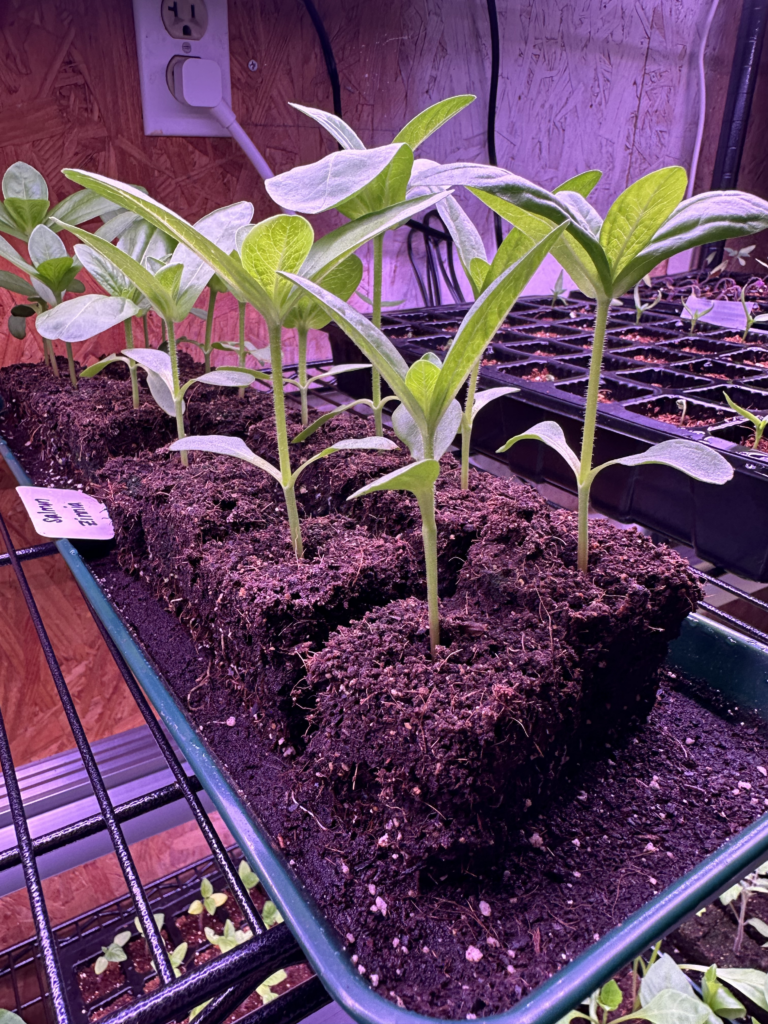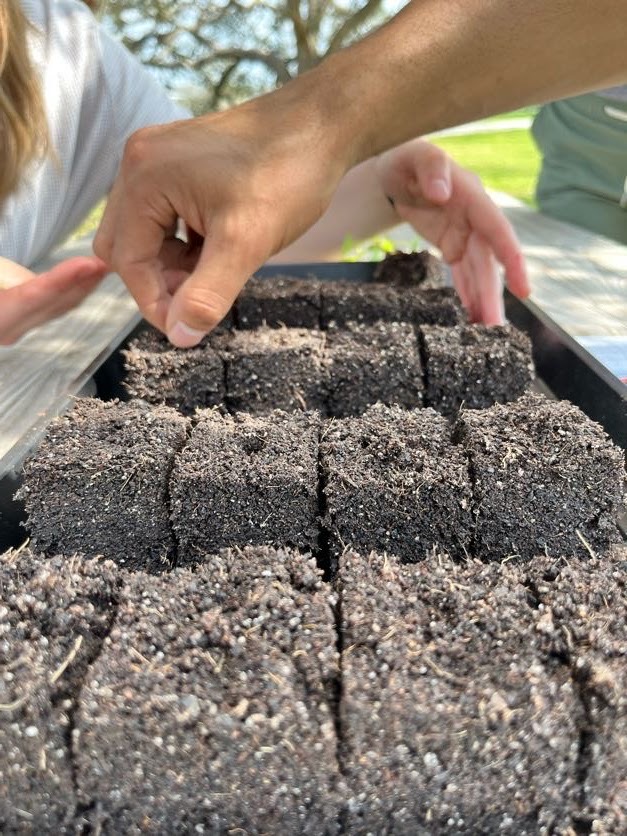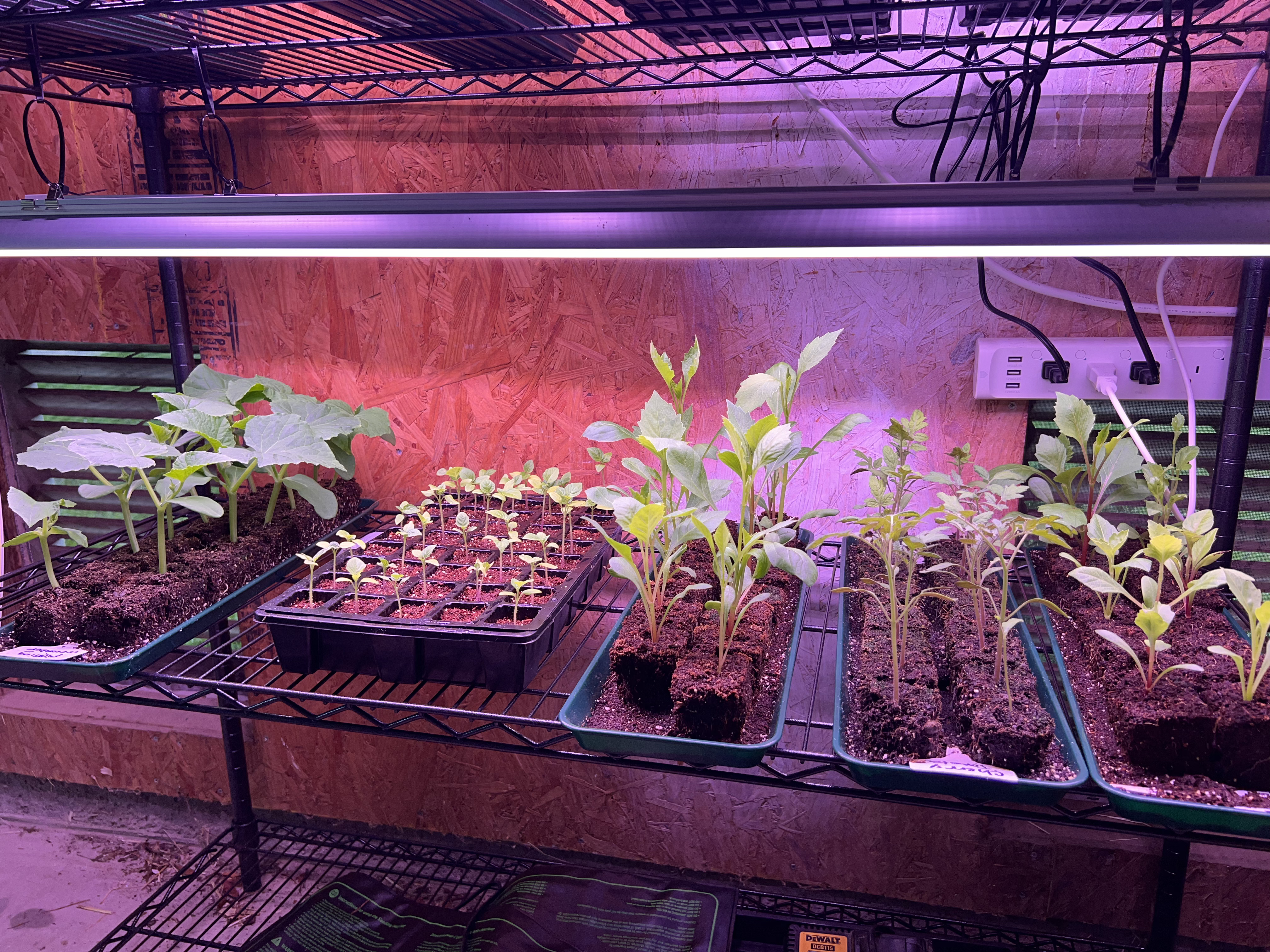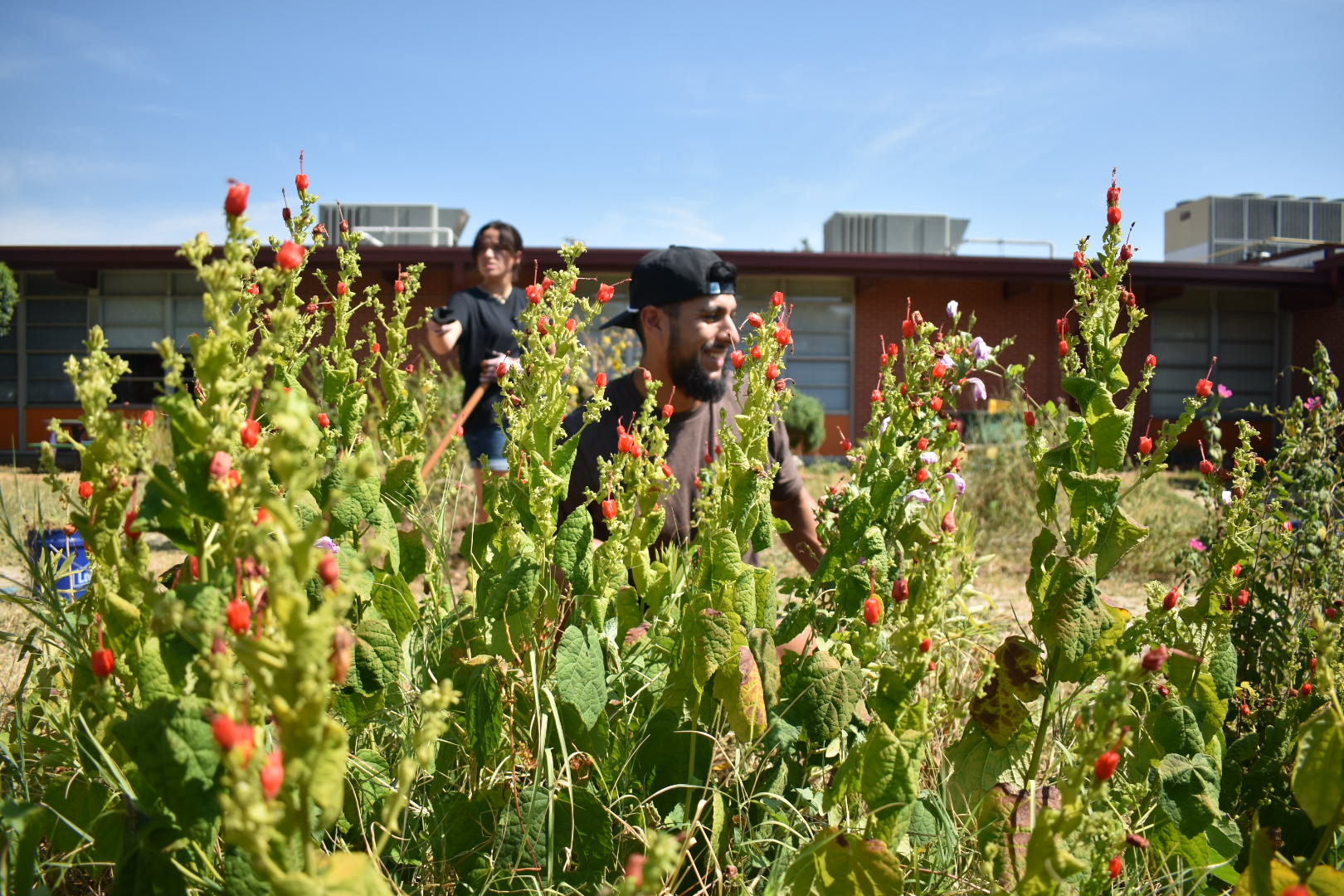Have you tried soil blocking yet?! 

We made the switch last year and it was a game changer. Our seedlings had stronger roots and they weren’t stuck in teeny tiny little plastic seed trays. And on top of just overall healthier plants, we used less plastic, which is something we’re always trying to do.
What exactly are soil blocks?
Compressed blocks of soil that you can grow your seeds in. Soil blocks are a great alternative to plastic seed start trays. So not only do soil blocks allow you to reduce plastic waste in your garden, it allows you to really develop a mindful connection with the soil and plants you are growing.
To be completely transparent, I wasn’t completely sold on the idea at first. When we tried soil blocks a few years ago we failed miserably. The soil was way too wet and the blocks turned to mush. But once we did a little research and some trial and error we were able to figure out the perfect mix for successful growth! The trick is finding the perfect ratio of soil to binding agent. We use coco coir but I’ve also heard of people using wool.
Why use soil blocks?

The blocks give the roots more space to grow and reduces the risk of transplant shock. Since there are no edges on each block the roots are able to air prune and not get wrapped around each other. Because of this it also allows the plant the establish itself more quickly, and let me tell you that is 100% true for us! Our seedlings are completely taking off this year using soil blocks.e
And the best part is it lets us reduce the amount of plastic we use in our day to day life with plastic seed trays.
This is the recipe we use to get the most successful seed starts:
3 part peat free soil, we use Coco Loco from Fox Farm
1 part coco coir , follow the directions and let it expand in water before you mix it in
1 part water
1 sprinkle of mycorrhiza, this just gives your seeds a little extra something to get startede
You’ll also need a soil block maker, which you can find on Amazon.
Everything we use to make our soil blocks is linked here 🙂


